Finding a plant that can handle hot, dry conditions without needing a lot of water is a common goal for homeowners who live in the dry Southwest. When you pass by one that is also beautiful, it is time to take a second look and consider adding it to your own garden. Desert ruellia has it all: attractive foliage, lovely purple flowers and a long bloom period, and it can handle the heat and arid conditions of the desert.
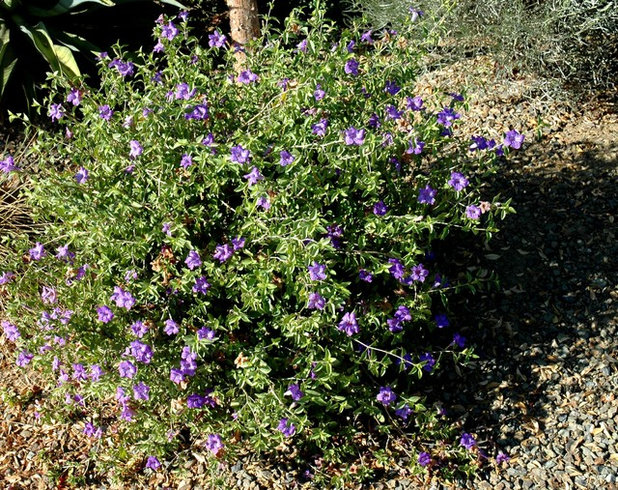
Noelle Johnson Landscape Consulting
Botanical name: Ruellia peninsularisCommon names: Desert ruellia, Baja ruellia
Origin: Native to Baja, Mexico, and the Sonoran desert
Where it will grow: Hardy to 20 degrees Fahrenheit (USDA zone 9; find your zone)
Water requirement: Low
Light requirement: Full sun to filtered shade
Mature size: 4 feet tall and 4 to 5 feet wide
Benefits and tolerances: Drought tolerant once established, but looks best with deep watering every three weeks in spring and fall, twice a month in summer and monthly in winter; attracts hummingbirds
Seasonal interest: Heavy flush of flowers in spring with sporadic flowering throughout the rest of the year
When to plant: In fall or spring from seed or transplants
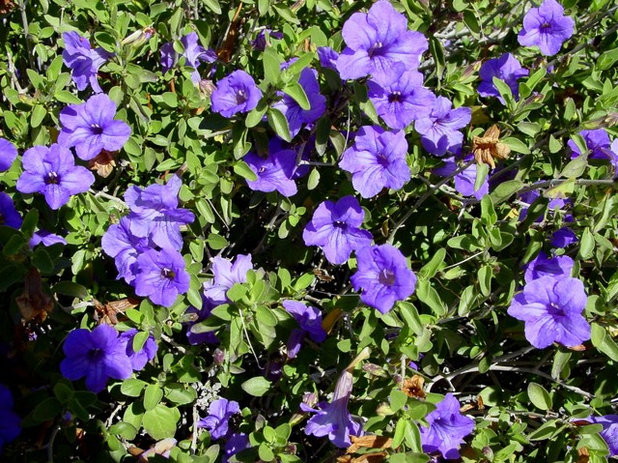
Noelle Johnson Landscape Consulting
Distinguishing traits. Desert ruellia is worth considering for your garden because of its low maintenance, year-round flowers and bright-green foliage. The fact that it can handle the extremes of hot, dry weather makes it an asset to low-desert gardens.
In spring purple bell-shaped flowers appear, providing a cool splash of color. The heaviest blooming occurs in spring and early summer, but desert ruellia will continue flowering sporadically throughout the rest of the year.
It’s evergreen in the absence of frost, and bright green oval-shaped leaves appear on light gray branches. The natural shape of desert ruellia is softly rounded, so pruning more than once a year is seldom needed. Avoid the temptation to prune this shrub formally into a rounded shape — it has a naturally attractive shape.
Unlike desert petunia (
Ruellia brittoniana)
, a closely related species, desert ruellia does not readily spread or self-seed.
Shown: Desert ruellia blooming in springtime
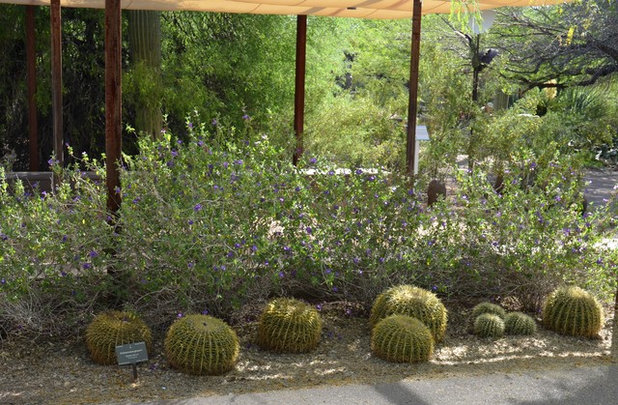
Noelle Johnson Landscape Consulting
How to use it. Desert ruellia makes a nice naturally shaped shrub that can be used as a border to separate planting beds, line a walkway or serve as a backdrop for other plants, such as
golden barrel (
Echinocactus grusonii), damianita and
Parry’s penstemon (
Penstemon parryi).
Because desert ruellia produces little litter, it is also suitable for use next to swimming pools or water features.
If you have an area that gets blasted by hot afternoon sun, try adding desert ruellia, which will thrive despite the difficult conditions. Are you looking for a large container plant? Desert ruellia does great when planted in large containers and can be underplanted with flowering annuals, such as alyssum,
petunias or
vinca.
Shown: Golden barrel cacti (
Echinocactus grusonii) planted in front of a row of desert ruellia.
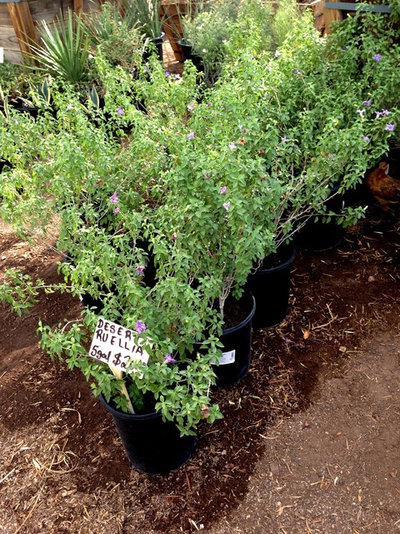
Noelle Johnson Landscape Consulting
Planting notes. Desert ruellia is not a fussy plant; its requirements are few. Plant it in well-drained soil in a hole that is three times as wide as the rootball. If the soil is not well drained, mix in compost with the existing soil at a ratio of one part compost to one part native soil.
Select a location that receives full sun or very light shade. Desert ruellia does not require any fertilizer and does not suffer from any pest or insect problems.
Able to survive on rainfall alone in many areas, desert ruellia will look much better when watered deeply to a depth of 2 feet twice a month in summer and every three weeks in spring and fall.
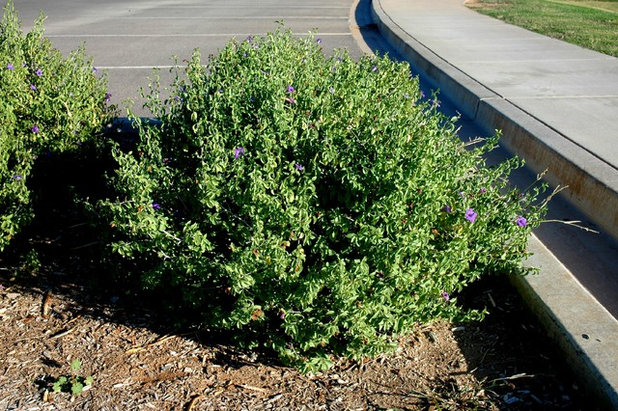
Noelle Johnson Landscape Consulting
Every two to three years, prune this shrub back to 1½ feet to rejuvenate it and to remove any old, unproductive growth. This type of severe renewal pruning should be done after the last frost. Desert ruellia will grow back quickly afterward.
Frost damage can occur when temperatures dip into the upper 20s. Once temperatures warm in spring, frost-damaged growth can be pruned away and regrowth will be rapid.
Desert ruellia can easily handle areas with full, reflected sun, where its growth will be more compact. It also can be grown in filtered shade, but the shape of the shrub will be looser and flowering will be reduced.
Ruellia californica is very similar to desert ruellia and shares many of the same characteristics, but is slightly more cold tender.
Browse more bright and colorful flowers





